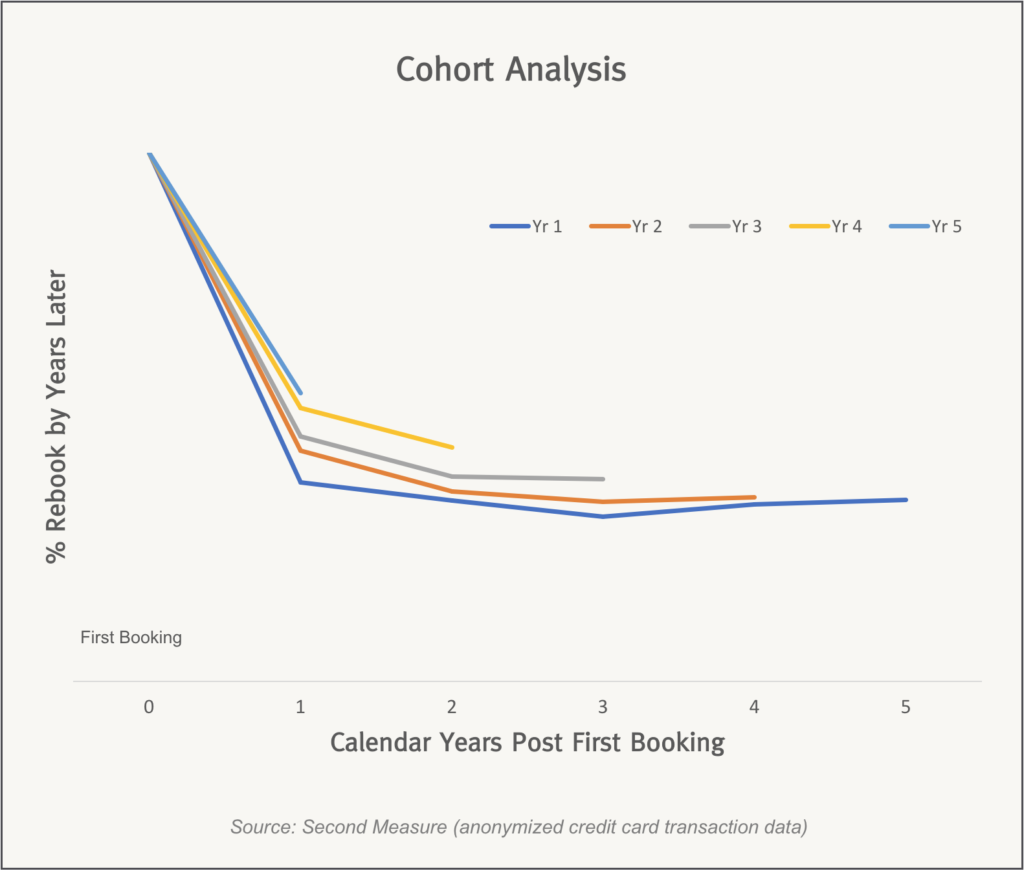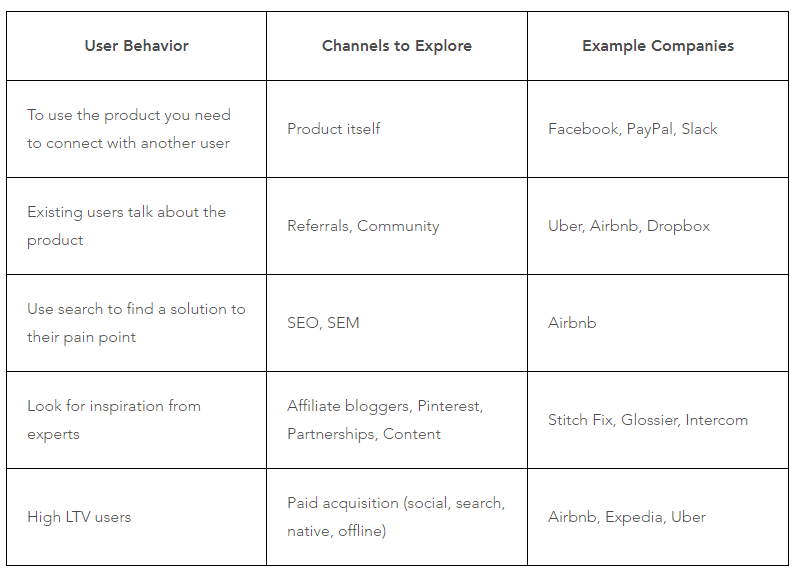Columna escrita por Anu Harihanan para el Blog de YCombinator.
«Growth hacks», like Hotmail’s inclusion of a signup link in its user’s default email signature, can be extremely helpful in driving viral growth early in a product’s path to product market fit (PMF). However, sustaining long-term growth and reaching hundreds of millions of users requires a scientific approach to growth. In fact, growth experts resoundingly say that «growth hacking» isn’t in their vocabulary or something they relate to their work. «Hacking» implies a haphazard / gut-driven approach, and the reality is quite the opposite. Startups that have seen amazing growth have developed teams and processes that are intentional, exceedingly metrics-driven, and thrive on experimentation.
To foster a scientific approach to growth, we’ve recently seen many companies break away from a strictly functional organizational design (with product, engineering, marketing, etc.) to create a cross-functional growth team. Facebook is, by all accounts, the pioneer of the growth team. Its first growth team was formed a decade ago with 3 people whose impact was immediately evident. Facebook launched the growth team when it had ~50 million monthly active users (with roughly flat month-on-month growth). The growth team and its surrounding program became a key driver of Facebook’s rapid expansion to 2 billion monthly active users today, as well as the evolution of the core Facebook product. Following Facebook’s lead, most successful consumer startups have created growth teams. Interestingly, these teams have converged around many of the same best practices.
The Y Combinator Continuity team gets a lot of questions from founders on formalizing growth. Everyone is eager to understand when to hire their first dedicated growth product manager (PM), how to structure a growth team, and how to scale it over time.
So, we spent time with 25 growth experts, who have worked at companies (including Facebook, Airbnb, Uber, Stitch Fix, Square, Slack and Instagram), to identify best practices for establishing a growth program.
When to Invest in Growth
A great way to waste money, resources, and jeopardize the future of your company is to invest in a growth program before you’ve proven you can retain customers. In other words, it’s best not to hire a full-fledged growth team (defined in «Building Your Growth Team» section) to put major ad dollars into growth until you’ve ensured you don’t have a «leaky bucket» problem. If you you determine with the process outlined in this section that you haven’t yet nailed retention, you can apply a growth approach to retention. For example, Stitch Fix hired a retention focused PM to run experiments to improve retention before they invested in new customer acquisition.
Check Your Retention
Start with this retention checklist to help determine if you have good retention, which you should be able to tackle with your core product team:
Good Retention vs. Bad Retention
The biggest question to ask at this point is: Is your retention good?
To determine if your retention is good, run through these 3 steps:
1. Stable long-term retention: Long-term retention should be stable and parallel to the x-axis (the y-axis represents the retention metric). It is common to see a dip after the first period (e.g., month 2 for high-velocity1 products or year 2 for low-velocity2 products), but the most important thing is to make sure that the long-term retention is stable and parallel to the x-axis (see this in the Cohort Analysis graph below).
2. Long-term retention in line with «average or median» benchmarks in your specific vertical: It is important to benchmark your retention against companies in your specific vertical. For example, stable long-term retention of 10% is poor if you are a social network.
3. Newer cohorts should perform better: «Cohort» refers to the group of new customers that started using your service that particular month. Determine whether newer cohorts are performing progressively better than older cohorts. If the retention of newer cohorts are better than older cohorts, it implies that you are improving your product and value proposition.
Below is an example of how Airbnb has performed–which would qualify as great retention. The graph below demonstrates stable long-term retention. Each new cohort did better than the previous one. For example, year 2 and year 3 retention rates are better than the year 1 retention rate. Airbnb’s long-term retention rate is better than the median retention from competitors in the same vertical.

It is important to benchmark your retention against companies in your specific vertical. Below, we have included average long-term retention targets for 5 business verticals.

Once you’ve passed these checks and know that you have good retention, you can take the first steps to build your formal growth team, which we cover in the next section.
Building Your Growth Team
In the early days at a company, pretty much everyone is responsible for growth as they are solidifying product market fit, and some companies treat this as a shared responsibility even past product market fit. The reason a company forms a dedicated growth team is to pour gasoline into product market fit by launching structured experiments to drive a desired behavior/action.If you have proven sustainable retention, you can focus on building a dedicated team to improve retention even further while acquiring and activating and retaining incremental new users.
Here’s the most common makeup of an initial, Year 1 Growth Team:
Year 1 Growth Team = 1 Growth-focused PM + 2-3 Growth Engineers + 1-2 Growth Data Scientists
When to hire your initial growth team:
- Most companies made their first hire when they had about 15 engineers on the team working on product.
- If you have strong retention, then the Growth PM (your first growth hire) is likely to be the 3rd or 4th PM on the team. The most common mistake CEOs make is waiting too long before they hire a growth-focused PM.
The trend is moving toward investing in building a growth team earlier on, with many starting to invest as soon as they have strong product market fit and retention. Additionally, there is considerable evidence supporting the argument that a formal growth team created at the right time accelerates the growth trajectory of a product.
A good growth team can also play the role of «defense» really well. Launch of new features and enhancements can often go sideways and impact usage. The growth team has the ability to understand the root cause within minutes (not days) and course correct the problem and thereby limit the negative impact. Facebook’s growth team is considered one of the best at defense and this has consistently helped them differentiate from competition since the early days.
Your first hires are critical as the initial team members will establish your company’s experiment framework and growth culture. 100% of growth experts refer to the first few hires as «magnets» for hiring and scaling the team. It’s no accident that many accomplished data scientists work at Stitch Fix as they are motivated to work and learn from the leadership of Eric Colson (former VP of data science and engineering from Netflix and one of the early hires Stitch Fix made).
While success cannot be attributed to the growth team alone, having a growth team in place early on helps accelerate the overall growth trajectory of the company.
To Do: Your Growth Team’s First Year
Once you have a team, there are five key initiatives you (and the team) will need to tackle in the first year. Here they are with additional detail on each below.
1. Set an absolute goal and define key metrics
The most important thing is to identify your absolute goal and drive every aspect of the funnel toward improving your goal. Casey Winters, former Growth Product Lead at Pinterest, wrote an excellent post about this. What we mean by absolute is that goals cannot be percentage changes or rate changes (for example, you should not have a goal like «improve conversion rates by 10%»). The goal needs to be an absolute number. (For example, «achieve 5M first-time room nights this year»). Note that this is an absolute milestone the entire team needs to hit.
An important next step is to break down an absolute goal into subgoals – for example, if Airbnb’s goal is 15M incremental room nights per year, it would need to achieve sub-goals with an absolute number of bookings from both new users and existing users. Jonathan Hsu, Partner at Social Capital (also part of Facebook’s early growth team), has shared his growth accounting equation — here’s how Airbnb’s equation would break down:
[x] Room Nights = [A] Room nights from new users + [B] Room nights from existing users
Similarly, Facebook’s absolute goal of monthly active users (MAU) incorporates both new and existing users. Here’s Facebook’s growth accounting equation:
[x] Monthly Active Users = [A] New monthly active users + [B] Retained monthly active users + [C] Resurrected monthly active users
For marketplaces, the companies would have absolute goals (and sub-goals) for both the supply and demand sides, and sometimes companies will have separate teams working on each side. For example, in the case of Airbnb the supply side metrics would include Host Activation, Quality and retention.
At times, teams make the goal too unrealistic or set it in such a way that it is too easy to achieve. The most common advice from growth experts is to set a goal that is halfway between «Sandbagging» and «Too hard to achieve». You want to set something that is a stretch, but at the same time motivate the team such that it is realistic to achieve.
100% of the growth experts said that the CEO must be aligned when setting and defining the absolute goal. The goal also needs to be communicated with the entire company so all teams are aware what the company plans to accomplish that year. Often CEOs wait too long or don’t fully endorse the goal and as a result, aligning teams within the company takes too long. This could severely hinder the growth team’s progress in the first year.
2. Identify growth channels
Once an absolute goal and subgoals have been defined, the next step is for the team to identify channels for their first few experiments. The most common framework growth experts use to identify channels is based on existing user behavior. The two key questions to ask are the following:
- How do customers find solutions / solve this issue today?
- How do your best users use your product today? Can you do something to get more such users to discover the product quickly?
The below behaviors were highlighted by Linkedin’s Aatif Awan, and we share some examples of companies that used those channels.

Not every channel is relevant for all companies. Most products find 1-2 relevant channels early on that really work for them. ~70% of experts mentioned that referrals were the top channel within the first year. Over time (as brand awareness increased) other online advertising channels were more fruitful.
There are some exceptions to this rule were referrals do not work as well. For example – you can’t offer a $20 discount and expect team members to persuade other team members to join Slack.
3. Establish Systems & Tools
The 4 most important elements you need to kick off a growth team are the following:
- Clean data set to track key metrics and goals
- Segmentation tools to be able to understand and segment the customer and activity at a granular level
- Rigorous experiment dashboard to analyze the experiment results and the statistical significance behind them
- Peer review process to discuss and analyze findings
It is critical for teams to have the right systems and tools in place to run experiments at scale. Especially key in the first year is the experiment dashboard. Experiment dashboards are essentially a single destination to track experiments/results, and allow for easy analysis by lots of people at the company. Dashboards contain:
- Experiment group metrics
- Control group metrics
- A set of metrics defined to track and measure statistical significance
The dashboard helps the team to run various experiments and test the results before proposing every single idea to be added to the product. As the growth team scales, the number of engineers increase and it becomes unwieldy without an experiment dashboard. A company at scale typically runs 1 experiment per growth engineer per week. With that future state in mind, it’s vital to start early with a solid growth experiment dashboard. The dashboard also becomes an invaluable archive of past experiments that is also immensely helpful when adding new team members or iterating on past experiments.
100% of the experts we spoke with emphasized their decision to build their own internal tools at scale. Initially, you can use tools like Mixpanel, Optimizely, Superset and Chartio to track your experiments.
It can take several iterations to formalize the experiment dashboard. For example – one of the experts cited that the experiment dashboard was formalized after several iterations only after they had ~25 to 30 growth engineers on the team.
Peer review & Individual Experimentation
Teams often set up an internal experiment review process on a biweekly basis. Team members present their hypothesis and share the results of the experiment they ran to test the hypothesis. Peers ask a lot of questions to decide whether they agree or disagree with the findings. Growth teams that run 100+ experiments per year cite that only a third of their experiments turn out to be positive.
Though the success rate is only 20% to 30%, the point of this exercise is to encourage engineers to take more risks.
A common contention is whether engineers are allowed to run experiments independently. Companies in their early stages often encourage engineers to run growth experiments on their own. However some of them require PM oversight as they scale, especially as they get more rigid with quality standards.
Another important element is to make sure you set heuristics for the growth team. Growth teams are constantly testing hypotheses and running experiments. One of the most common heuristic experts use is: «Don’t test things you wouldn’t ship to everybody»
4. Establish User Research
Data alone cannot answer all the questions. It is equally important to have user researchers in place to really understand what is happening behind the numbers.
Your first 100M users will look a lot different from the second 100M users. Therefore it is important to do the following:
- Solicit real time feedback from users
- Use tools like Inspectlet to track UX
- Meet users outside of San Francisco, especially if it was your first core market. Other markets will look a lot different from SF
- Pay attention to how users use the product internationally. There may be cultural nuances in addition to language gaps (for example, people in Japan do not like to post photos of people without their permission and products may need to adapt to local taste).
- Document every single use case. What is perfectly normal for one group can be very different for another group of users.
- As you scale it is important to add dedicated user researchers to the growth team
5. Continue to Iterate
While the above roadmap items will help set the foundation for a strong growth program, a lot of the tools, processes and systems will evolve at scale.
This has been the biggest source of debate among companies. Facebook pioneered the concept of a separate growth team (meaning: Growth is essentially a department within the company). The rationale behind it was if they didn’t assign sole responsibility for growth of MAUs, then no one would own it. This has worked very well for Facebook, which recently hit 2 billion MAUs (the only social network in the world to have achieved this). Facebook was also really good at clarifying responsibilities across various teams. Advocates of separate growth teams cite that it is important for the Head of Growth to report directly to the CEO.
However other companies like Uber, Airbnb and Slack, started with separate growth teams but later merged them with product team. Growth is not about just looking at data to drive insight. The growth team also experiments and makes subtle changes to the product to fuel growth, and this becomes increasingly important at scale. Therefore, advocates of this approach cite that it is crucial that the product and growth teams are within the same org. In these cases the Head of Growth reports to Head of Product.
Traditionally, a company’s marketing team has been responsible for driving user acquisition (and the associated budget), so this is sometimes a default department in which to house a growth team. Often this evolves from prior functions that have lived in the marketing department (like performance marketing and user acquisition). In these cases, the Head of Growth would report to the Head of Marketing. The general sentiment about this approach is that the line of reporting is a bit rooted in the past, and most growth experts cited this as the least-favorable option.
The commonality, regardless of their department, is that the growth team can be more than 100 cross-functional people. It is roughly composed of the following:
- 10% Product Managers
- 50% Engineers.
- 10%-15% Data Scientists.
- 10% Product Marketing.
- 10%-15% Designers.
- ~5% Researchers.
The End Goal: Growth is in the Company’s DNA
Hopefully, when you’re ready to create a scalable growth program, this will be helpful. This is the newest frontier in the cross-section of marketing and product, so it’s still evolving. When done right, an amazing growth program will permeate the entire organization, making an evidence-based mindset part of the company’s DNA.
Para ver la nota original, ingresá ACÁ.





